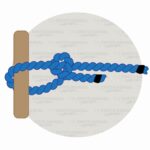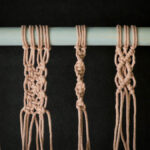A square knot is an ancient binding knot that sailors have used for centuries. The square knot, also called the Hercules knot by the ancient Greeks, has been used for at least 4,000 years. Pliny the Elder noted its use in medicine, believing it helped wounds heal faster. It was also used for tying belts and sashes.
Sailors later adopted it for reefing sails, securing cargo, and other onboard tasks, leading to the name “reef knot” in 1794. The knot consists of two half knots, making it a simple binding knot. While it can be used to join two ropes, this is not recommended as it can slip under strain. The term “square knot” first appeared in A Seaman’s Friend by Richard Henry Dana Jr. in 1841.
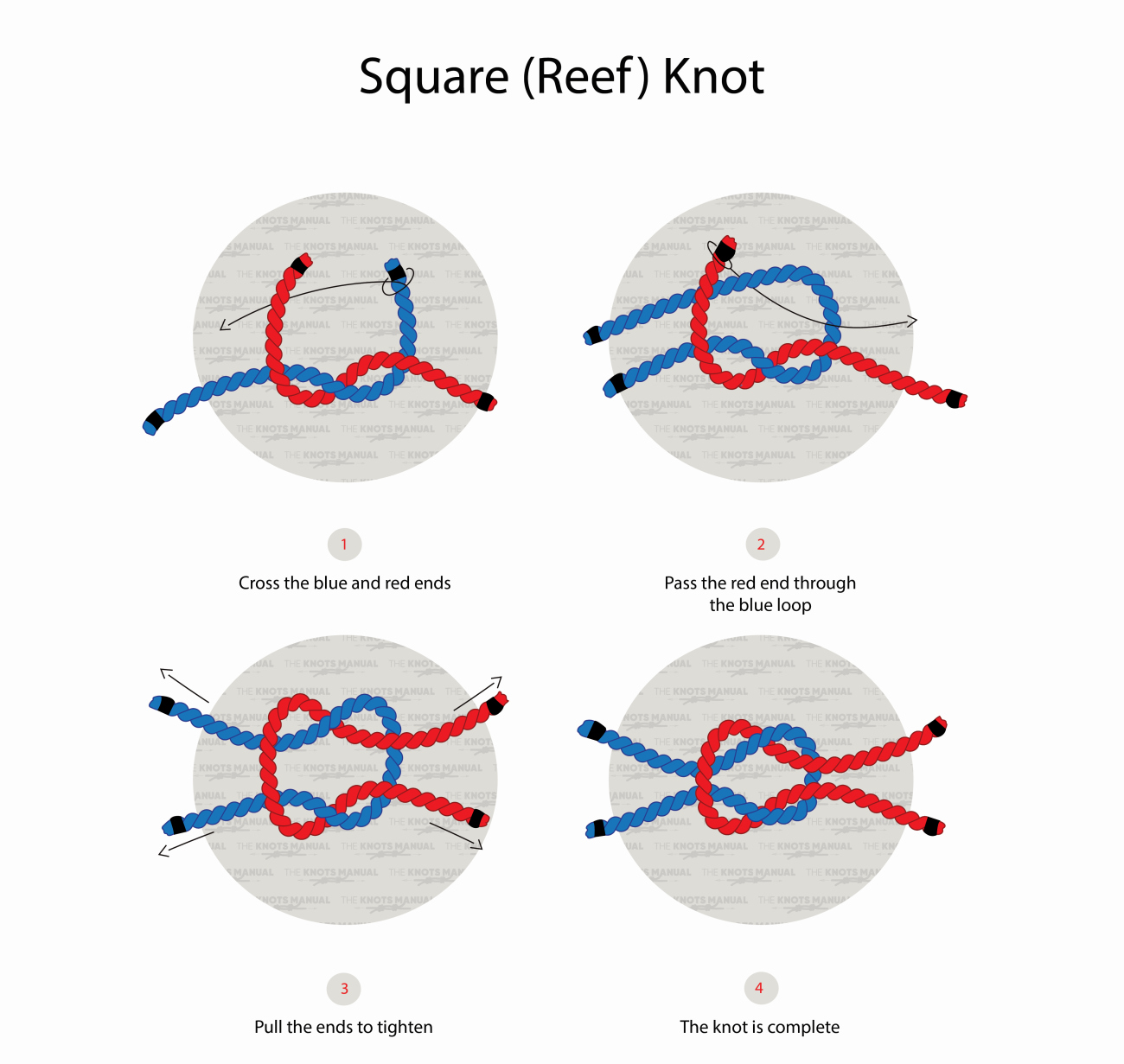
It is sometimes used as a bend, but it’s recommended not to use it as such. Square knots are quick and easy to tie and are ideal for non-critical situations.
Pros and Cons of the Square Knot
Pros:
- Easy & quick to tie – Simple to learn and remember.
- Useful for binding – Holds well when securing bundles.
- Easy to untie – Pull both standing ends to release.
Cons:
- Unreliable for securing loads – Slips under strain.
- Prone to jamming – Difficult to untie if over-tightened.
- Easily mistaken for a granny knot – A weaker, less stable alternative.
- Fails as a bend – Unsafe for joining two ropes.
The Ashley Book of Knots warns: “More lives have been lost using a square knot as a bend than from any other dozen knots combined.”
Making Square Knots More Secure
- Adding half knots can improve hold but doesn’t make it fully secure.
- Never use as a bend – Unsafe for joining two ropes.
- Works best with same-diameter ropes to reduce slippage.
- Tying against a sturdy object can help secure the knot.
How To Tie A Square Knot
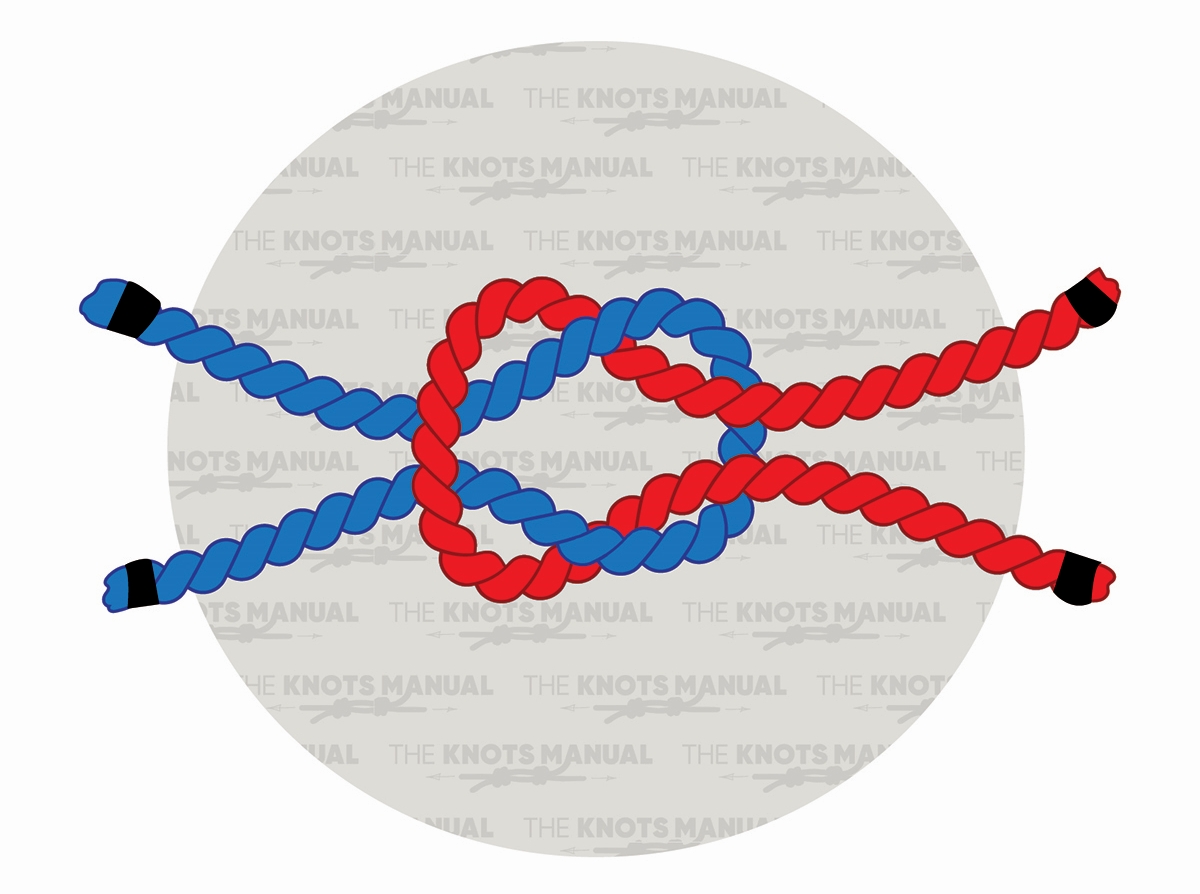
Tying a square knot doesn’t have to be complicated; just follow the simple directions below:
Begin with two separate ropes overlapping each other.
Step 1:
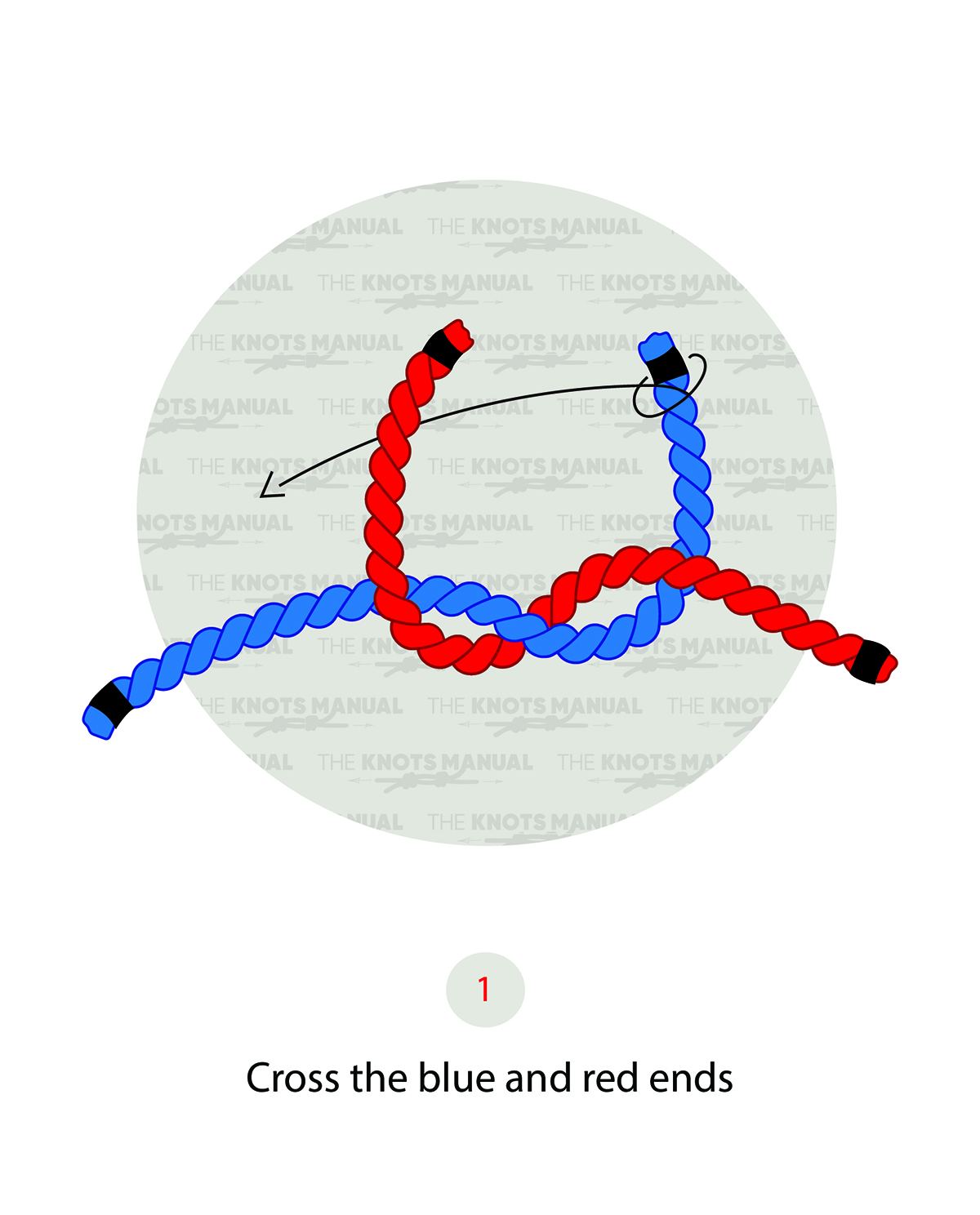
Cross the red rope’s working end over the blue rope’s working end.
Step 2:
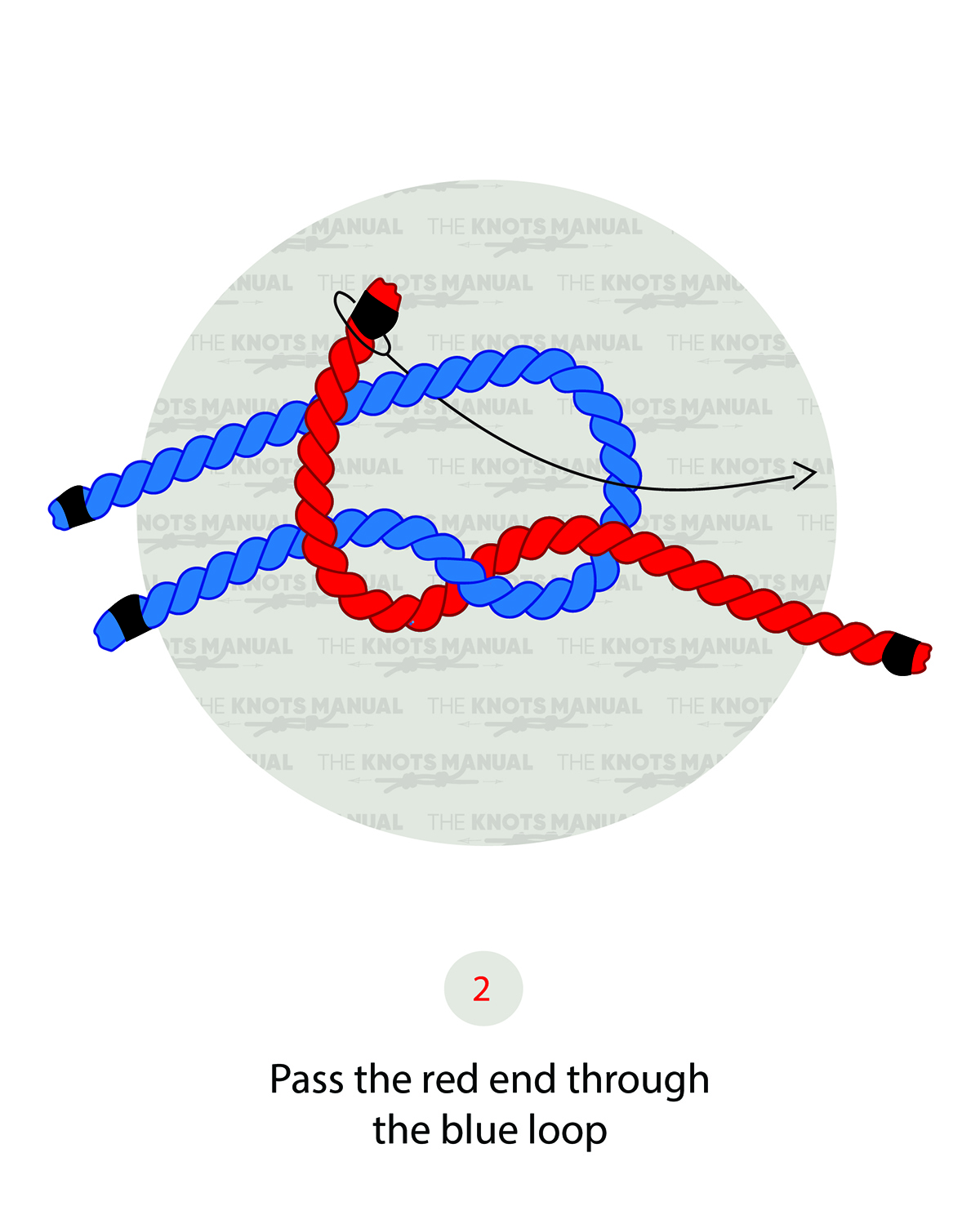
Pass the working end of the red rope through the loop created by the blue loop.
Step 3:
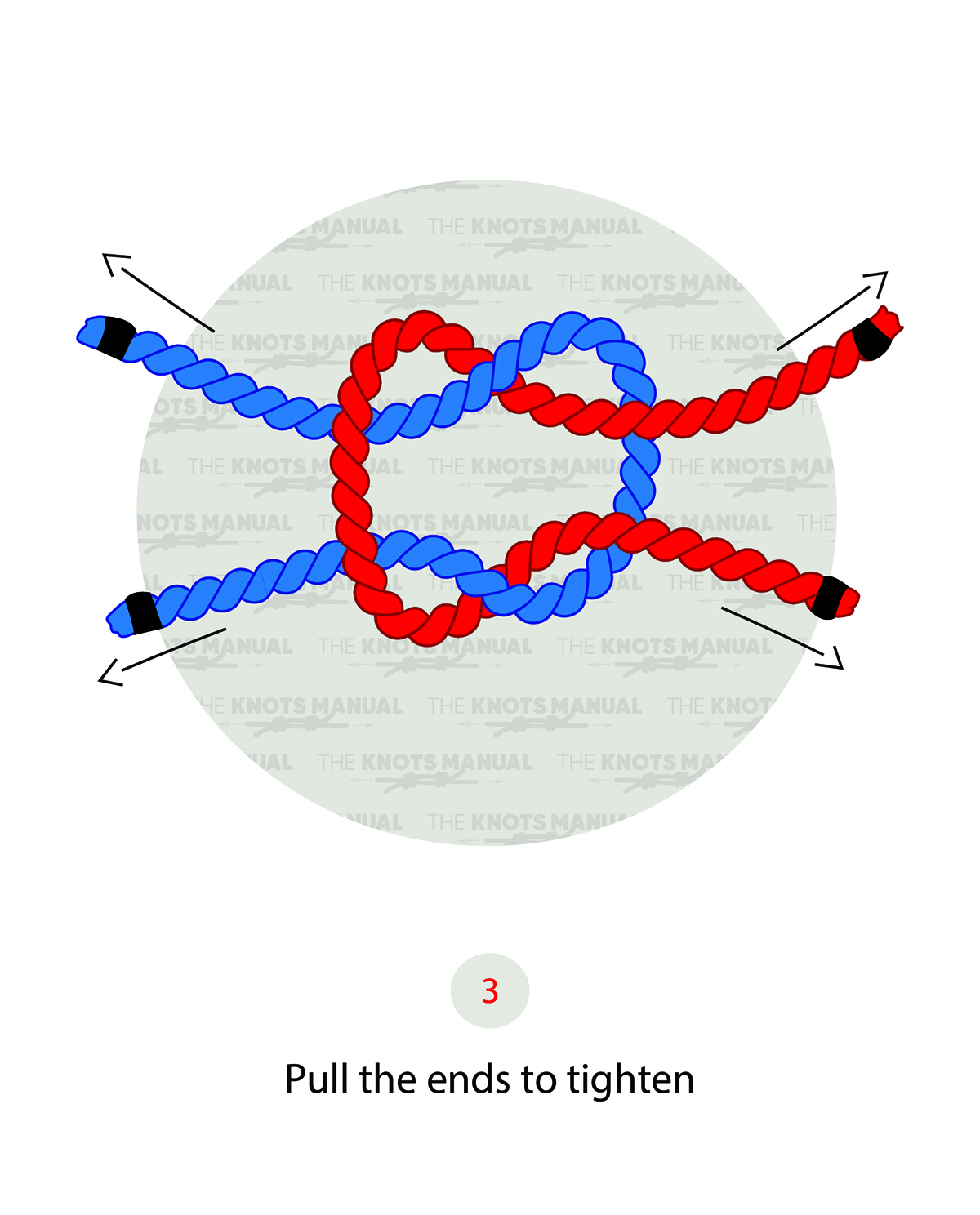
Pull both ropes’ working ends and standing ends simultaneously to tighten the knot.
Step 4:
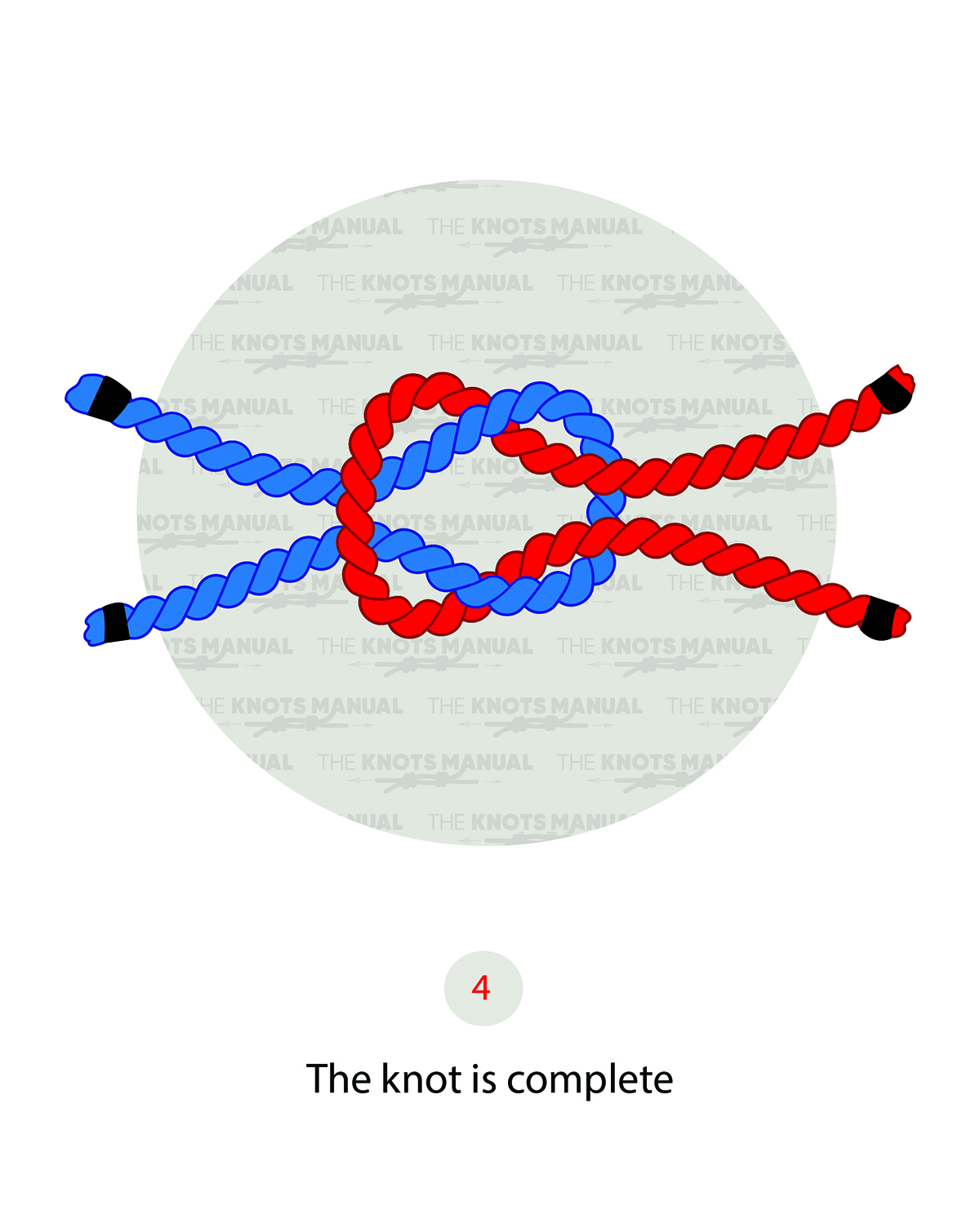
The square knot is complete.
* You can also tie a square knot using bights, which leaves you with a more secure knot. *
* Avoid creating a granny knot: ensure the standing and working ends of the rope exit the knot together. *
What Are Square Knots Used For?
Though square knots are unstable and unsafe for critical loads, they have many uses. They are a popular knot for use where safety is not a concern, such as with crafts.
Jewelry
Square knots are popular for making jewelry and beadwork. Designers use the knot to tie two ends of a cord together.
Teaching
Square knots are still important to learn, even if you have yet to use one practically. Square knots make up the foundation of half knots and half hitches. By learning to tie a square knot first, it’ll be easier to learn how to tie other, more complex knots.
Boy Scouts in the United States must show skill in tying the square knot to graduate from their programs. Other scouts worldwide must master tying the knot, too, and scouts can win awards for their mastery of it.
Other Uses
Nine other common uses of the square knot include:
- Tying shoes
- Tying a bow on a gift
- Macrame
- Tying a sail cover over a sail
- Securing a bundle (e.g., sticks, blankets, ski poles, garden tools, oars)
- Securing rope coils
- Bandages
- Tying the obi (belt) of keikogi — a form of martial arts
- Tying plastic garbage bags to create a makeshift handle
Knots Similar To The Square Knot
Flat Knot: These knots are the same as a square knot but are used in a reef line. They lie entirely flat, making them ideal for bracelets and belts.
Granny Knot: Granny knots are often mistakenly tied while trying to tie a square knot. They are a binding knot which is less secure than a square knot. Granny knots are used to secure a rope around an object, although they are quite insecure.
Double Throw Knot (Surgical Knot): Surgeons use these knots as the first part of a ligature. It is possible to mistakenly tie a square knot instead of a surgeon’s knot if you aren’t paying attention.
Thief Knot: These knots are useless, yet interesting to tie. They are almost identical to the square knot. As the legend goes, sailors would tie their duffel bags closed with a thief knot to identify stealing. The thief would retie the bag with a standard square knot. Doing so would create a subtle difference only the bag owner would detect. It is unclear if there is any truth to this legend, and the knot serves no other purpose.
FAQs
Is The Square Knot Illegal?
There is no evidence suggesting the square knot is illegal. In fact, many people still use it for many purposes. Yet, the square knot is insecure and should never be used with critical loads. It slips easily and can become dangerous when used with heavy loads.
Do You Use A Square Knot For Restraints?
You should not use the square knot for restraints as it is insecure and cannot hold heavy loads. It would be very easy for someone restrained with a square knot to undo the knot and escape.
